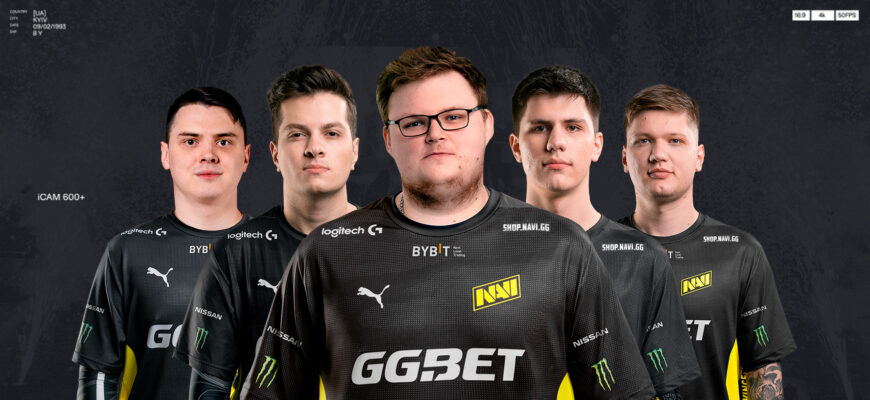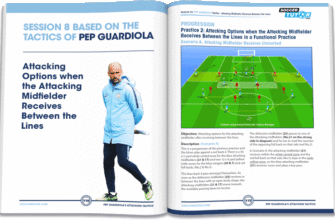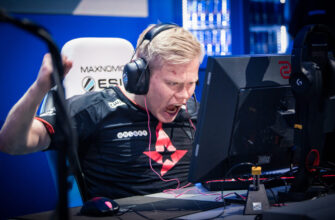In the volatile world of professional Counter-Strike 2, team rosters are perpetually in flux, a testament to the relentless pursuit of competitive advantage. Recently, prominent CS2 analyst Janković “YNk” Paunović cast a critical eye on the current state of Natus Vincere (NAVI), suggesting that the European powerhouse requires at least one more player change to truly galvanize its performance. This assertion, shared via his personal social media, ignites a familiar debate: how many changes are enough, and at what cost?
The Analyst`s Verdict: More Than a Single Move
YNk`s commentary stems from a belief that NAVI`s current trajectory, despite recent adjustments, falls short of the team`s lofty standards. His observation posits that while one change was executed, the ideal scenario might have involved more, only to be hindered by the availability of suitable talent. “It seems NAVI has reached a point where another substitution is required to shake up the team`s game,” YNk stated, adding a crucial caveat: “But if the club wants to change several players at once, suitable candidates might simply not be on the market, and they will have to wait for a break.”
This sentiment reveals a nuanced understanding of the esports transfer market, implying that simply desiring change does not guarantee the perfect pieces are readily available. It`s a strategic chess match where timing and opportunity are as vital as raw skill.
The Makazze Experiment: A Calculated Risk?
NAVI`s most recent roster alteration saw Justinas “jL” Lekavicius depart the main lineup in July, making way for Drin “Makazze” Shaqiri, who transitioned from Natus Vincere Junior. This move was presumably an attempt to inject fresh talent and potentially a new dynamic into the squad. However, the subsequent results paint a mixed picture:
- A respectable **top-4 finish at IEM Cologne 2025** offered a glimmer of hope.
- Yet, **9-16th place finishes at both BLAST Open London 2025 and Esports World Cup 2025** suggest that the singular change might not have been the definitive solution NAVI was seeking.
These inconsistent performances lend weight to YNk`s argument. A top-4 finish is commendable, but for a team of NAVI`s caliber and history, anything less than consistent contention for titles is often deemed insufficient.
The Scarcity Paradox: Top Talent in a Crowded Field
Perhaps the most intriguing aspect of YNk`s analysis is the mention of a potential **talent scarcity**. In an ecosystem brimming with aspiring professionals, the idea that top-tier teams struggle to find *suitable* replacements might seem counterintuitive. However, “suitable” implies more than just mechanical skill; it encompasses team chemistry, role fit, communication style, strategic understanding, and the ability to perform under immense pressure.
“I think NAVI intended to make two changes, but there were no options. So the team just took Makazze from the academy, hoping that would be enough, but it didn`t work out.”
This suggests that while the player pool is deep, the subset of players who can seamlessly integrate into a championship-contending roster and elevate its performance is surprisingly shallow. It`s not merely about finding a good player; it`s about finding the *right* player, a challenge that becomes exponentially harder at the pinnacle of esports.
Beyond Roster Swaps: The CS2 Adaptation Factor
It`s also crucial to acknowledge the broader context: the ongoing transition to Counter-Strike 2. A new game engine, subtle gameplay tweaks, and evolving meta can significantly impact individual player performance and team strategies. What worked perfectly in CS:GO might not translate directly to CS2, forcing teams to adapt not just their players, but their entire philosophy. This transition period might be magnifying existing team issues or creating new ones, making the task of identifying effective roster solutions even more complex.
Conclusion: A Tightrope Walk for NAVI`s Future
NAVI finds itself at a critical juncture. The pressure to reclaim their dominance is palpable, yet the path forward, as highlighted by YNk, is fraught with challenges. The notion that an elite team might be hampered not by a lack of will or resources, but by a limited market for truly impactful talent, offers a sobering perspective on the realities of competitive esports.
The coming months will undoubtedly reveal whether NAVI will heed the call for further changes, or if they will double down on their current composition, hoping that time and further refinement will eventually unlock their full potential. One thing is certain: the eyes of the CS2 world will be watching, anticipating the next move in NAVI`s unending pursuit of perfection.









